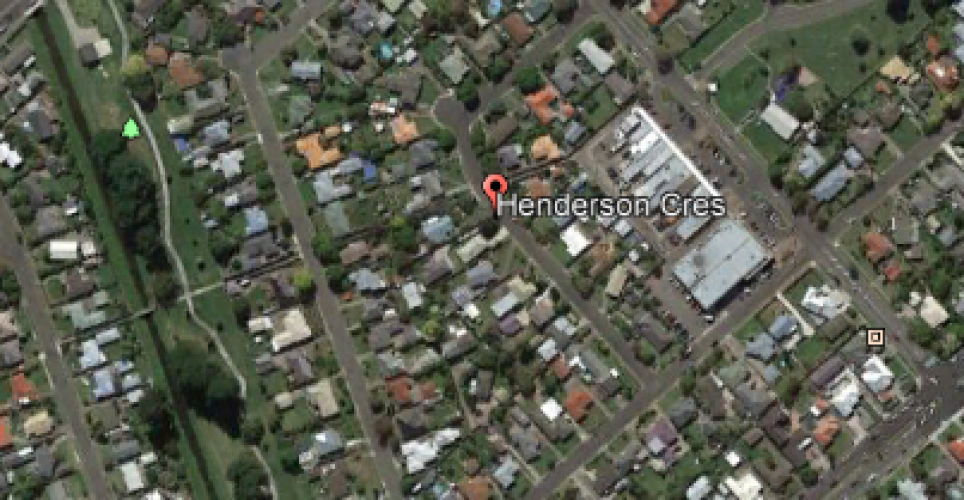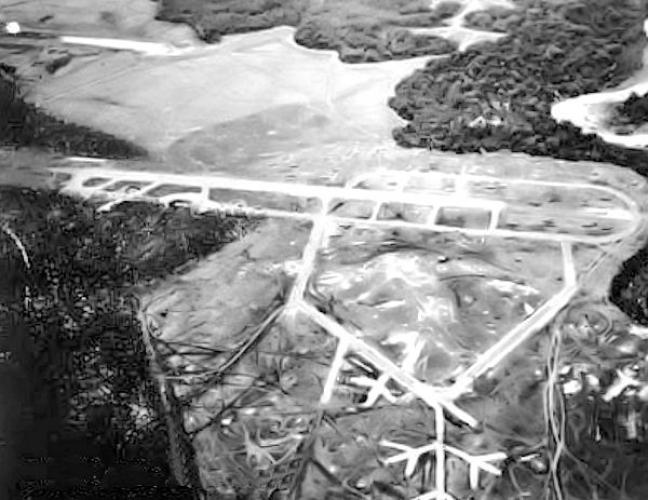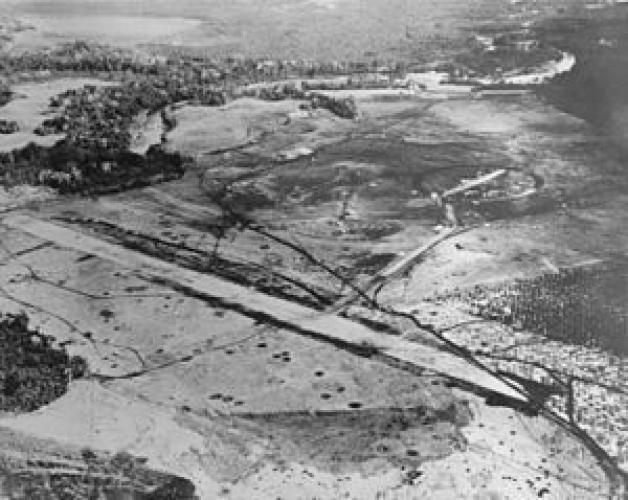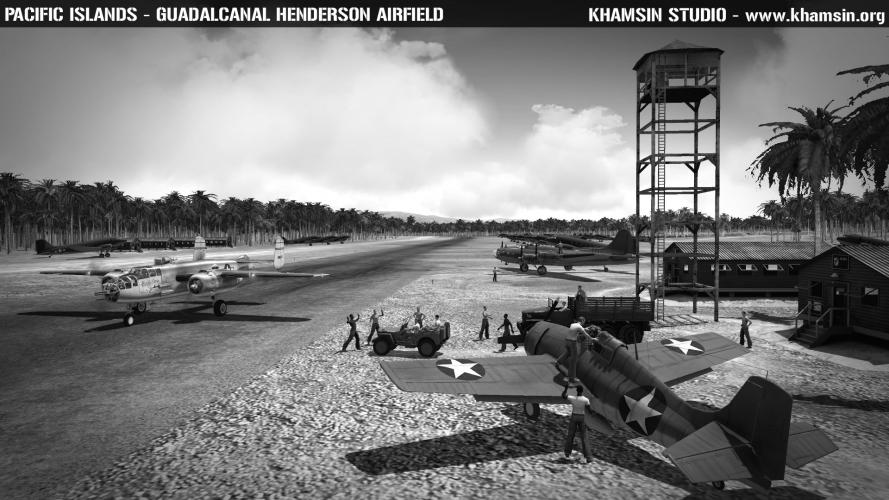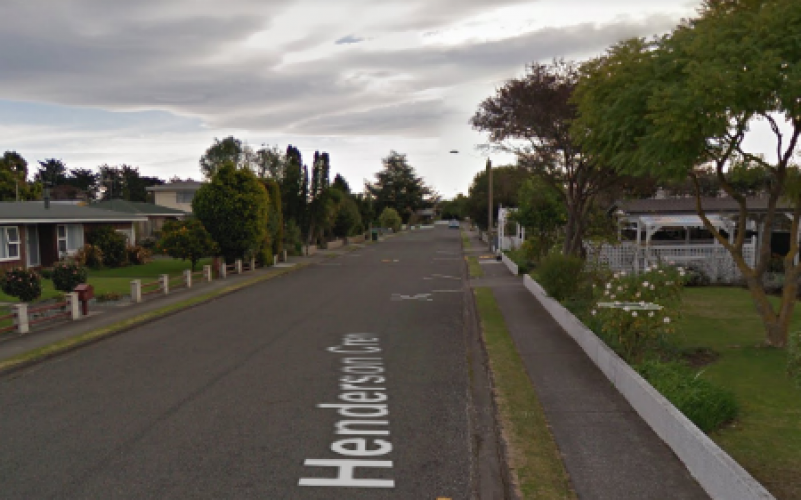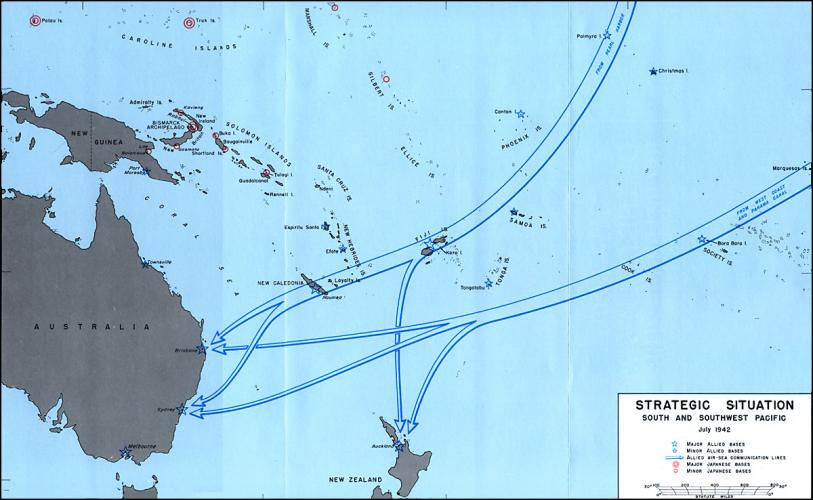219 Henderson Cres Napier, street scene 2018
Reason for the name
This Onekawa Street was named after Henderson Field in the Solomon Islands. Henderson Field is a former military airfield on Guadalcanal, Solomon Islands during World War II. Originally built by the Japanese, the conflict over its possession was one of the great battles of the Pacific war. Today it is Honiara International Airport.
The Battle for Henderson Field, also known as the Battle of Guadalcanal or Battle of Lunga Point by the Japanese, took place from 23 to 26 October 1942 on and around Guadalcanal in the Solomon Islands. The battle was a land, sea, and air battle of the Pacific campaign of World War II and was fought between the Imperial Japanese Army and Navy and Allied (mainly United States (U.S.) Marine and U.S. Army) forces. The battle was the third of the three major land offensives conducted by the Japanese during the Guadalcanal campaign.
In the battle, U.S. Marine and Army forces, under the overall command of Major General Alexander Vandegrift, repulsed an attack by the Japanese 17th Army, under the command of Japanese Lieutenant General Harukichi Hyakutake. The U.S. forces were defending the Lunga perimeter, which guarded Henderson Field on Guadalcanal that had been captured from the Japanese by the Allies in landings on Guadalcanal on 7 August 1942. Hyakutake's force was sent to Guadalcanal in response to the Allied landings with the mission of recapturing the airfield and driving the Allied forces off the island.
Hyakutake's soldiers conducted numerous assaults over three days at various locations around the Lunga perimeter, all repulsed with heavy Japanese losses. At the same time, Allied aircraft operating from Henderson Field successfully defended U.S. positions on Guadalcanal from attacks by Japanese naval air and sea forces.
The battle was the last serious ground offensive conducted by Japanese forces on Guadalcanal. After an attempt to deliver further reinforcements failed during the Naval Battle of Guadalcanal in November 1942, Japan conceded defeat in the struggle for the island and evacuated many of its remaining forces by the first week of February 1943.
Author: The Poppy Places Trust
On 7 August 1942, American forces of the United States 1st and 2nd Marine Divisions landed on the islands of Guadalcanal, Tulagi, and Florida in the southern Solomon Islands with the objective of denying their use by the Japanese to threaten the supply and communication routes between the U.S., Australia, and New Zealand. The Allies also intended to use Guadalcanal and Tulagi as bases to support a campaign to eventually capture or neutralize the major Japanese base at Rabaul on New Britain.
The Marines overwhelmed the outnumbered Japanese defenders and captured Tulagi and Florida, as well as the nearly completed RXI airfield which was being built by the Japanese on Guadalcanal. The captured airfield was named Henderson Field in honour of United States Marine Corps Major Lofton Henderson, commanding officer of VMSB-241 who was killed during the Battle of Midway while leading his squadron into action against the Japanese carrier forces, thereby becoming the first Marine aviator to perish during the battle.
Surprised by the Allied offensive, the Japanese made several attempts between August and November 1942 to retake Henderson Field. Three major land battles, seven large naval battles (five night time surface actions and two carrier battles), and continual, almost daily aerial battles culminated in the decisive Naval Battle of Guadalcanal in early November 1942, during which the last Japanese attempt to bombard Henderson Field from the sea and to land enough troops to retake it was defeated.
In December 1942, the Japanese abandoned further efforts to retake Guadalcanal and evacuated their remaining forces by 7 February 1943, while harassed and pursued by an offensive of the U.S. Army's XIV Corps, conceding the island to the Allies.
Reconnaissance work was carried out by specially fitted Navy Liberator bombers operating from Henderson Field on Eniwetok and other islands in 1944. Royal New Zealand Air Force squadrons were using the air base during October and November 1944 for patrols and searches. The RNZAF provided No 52 Radar Unit in March 1943 with GCI radar, which (unlike the SCR 270 radar) could provide altitudes of approaching enemy planes.
Henderson Field was abandoned after the war. The field was modernized and reopened in 1969 as Honiara International Airport, the main airport for the Solomon Islands. In the late 1970s the runway was expanded and lengthened.
See: Guadalcanal Campaign and Battle for Henderson Field for more information.

